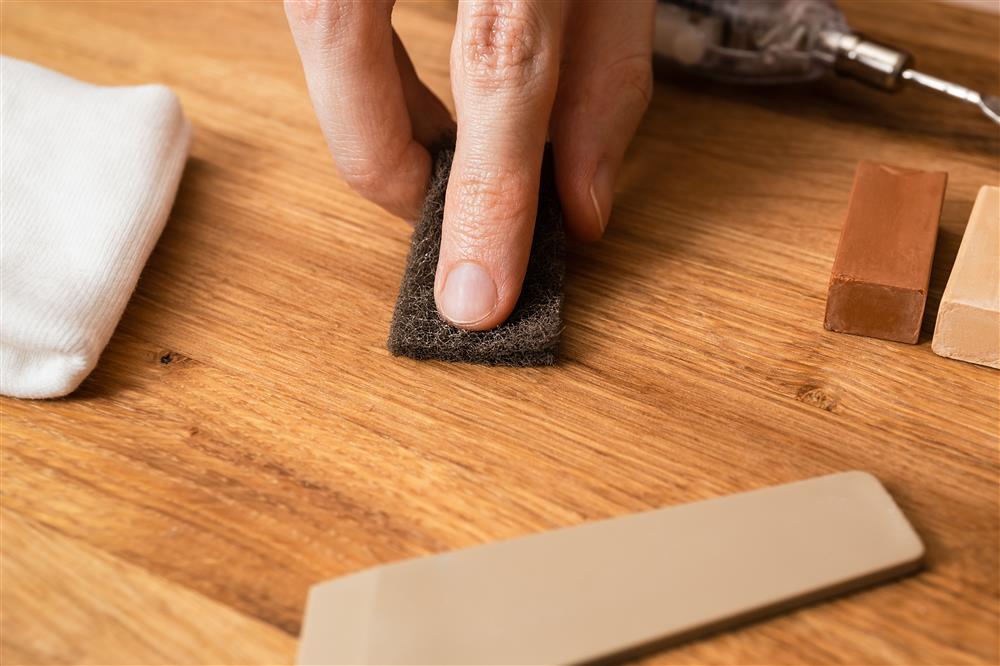
Nothing quite compares to a beautiful solid wooden door, but much like your pet fern that needs some TLC to thrive, your amazing wooden door needs a little lovin' too!
In this blog, we’ll be looking at why wooden doors crack, what role humidity plays in the whole process, installation techniques that may prevent cracking, some maintenance tips as well as a step-by-step guide to repairing cracks when they do occur.
The Culprit Unveiled: Understanding the Causes of Wooden Door Cracks
Amidst the charm of wooden doors lies an inconspicuous culprit – moisture. Humidity, the unseen saboteur, can quietly wreak havoc on our beloved doors. Wood undergoes a delicate dance of expansion and contraction with changing seasons, making it susceptible to cracks.
During humid months, wood swells as it absorbs moisture from the air, while dry conditions cause shrinkage and stress on the door's structure. This repetitive cycle takes a toll, resulting in unsightly cracks.
Understanding humidity's influence is key to preventing these cracks. By controlling indoor moisture and ensuring proper ventilation, we shield our wooden doors from harm, preserving their allure for generations to come.
Moisture Matters: How Humidity Affects Wooden Doors
Humidity, an unpredictable foe, silently assaults your wooden doors, threatening their integrity. As moisture levels fluctuate, the wood expands and contracts, potentially leading to cracks and warping.
In hot, humid weather, doors may swell, sticking or rubbing against frames. Conversely, in dry conditions, contraction causes unsightly gaps affecting aesthetics and insulation.
Fear not! Armed with knowledge and strategies, shield your doors from humidity's mischief. We'll explore effective measures, from sealants to dehumidifiers, maintaining an ideal moisture balance. Master this battle, and your wooden doors will endure, remaining strong and beautiful for years to come.
Nailing Down the Issue: Proper Installation Techniques
When it comes to the longevity and stability of your wooden doors, proper installation lays the foundation for a crack-free future. This section delves into the essential aspects of installing wooden doors with precision and finesse.
- The Art of Alignment: Achieve a flawless fit by ensuring the door and frame are perfectly level and plumb, reducing the risk of cracks over time.
- Say No to Over-tightening: Avoid over-tightening screws and hinges to prevent structural imbalances, which can lead to warping and cracking.
- Mind the Gaps: Properly seal gaps between the door and frame with weatherstripping or insulation to enhance energy efficiency and minimize moisture entry, a common cause of wooden door cracks.
- All About Expansion Gaps: Incorporate appropriate expansion gaps during installation to allow the door to breathe and adapt naturally to changes in humidity and temperature, avoiding stress-induced cracks.
Master these installation techniques to ensure your wooden doors stand strong and steadfast against the test of time.
Crack Prevention 101: Proactive Measures for Happy Wooden Doors
- Embrace Regular Cleaning: Dust and wipe your wooden doors regularly with a soft, damp cloth, avoiding harsh chemical cleaners that can damage the wood's surface.
- Seal the Deal with Varnish or Paint: Apply protective varnish or paint to shield your doors from moisture and temperature changes, reducing the risk of cracks.
- Weather Stripping for the Win: Install weather stripping around the edges to create an extra barrier against the elements, minimizing the likelihood of cracks.
- Mind the Humidity: Use a dehumidifier in humid environments and a humidifier in dry climates to regulate moisture levels, preventing excessive wood expansion and contraction.
- Routine Inspections: Regularly check for damage or wear, addressing issues like loose hinges or small cracks promptly to prevent worsening.
- Gentle Handling: Treat your wooden doors with care, avoiding slamming or hanging heavy objects to prevent unnecessary stress that could lead to cracks.
Follow these tips to give your wooden doors the tender loving care they deserve, ensuring they stay strong, beautiful, and crack-free for years to come.
Sealing the Cracks: A Step-by-Step Guide to Fixing Door Cracks
- Assess the Damage: Examine the cracks on your door to determine the extent of the problem.
- Gather Your Tools: Get all the necessary tools, including wood filler, putty knife, sandpaper, and paint.
- Clean and Prep: Clean the cracks and surrounding area, ensuring it's free from dust and debris.
- Apply Wood Filler: Fill the cracks with wood filler, using a putty knife to spread it evenly.
- Sand it Smooth: Once the filler dries, sand the repaired area until it's smooth and level with the door surface.
- Paint or Varnish: Match the door's finish with paint or varnish to seamlessly blend the repaired section.
Voila! Your door is now crack-free and looking fabulous once again. Enjoy the satisfaction of a job well done!
Conclusion
In conclusion, by understanding the role of humidity and embracing the right prevention techniques, you can protect your wooden doors from the dreaded cracks. Proper installation, routine inspections, and gentle handling go a long way in preserving their beauty and longevity. And should cracks occur, fear not! Our step-by-step guide will equip you to fix them like a pro. So, go ahead and give your wooden doors the TLC they deserve, and they'll reward you with timeless charm and a crack-free future.
Doors too far gone or just time for a change, visit us to view our full range of doors.
